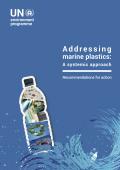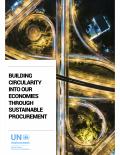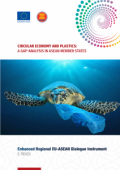
This report identifies gaps to address marine plastics at each value chain stage and recommends actions to achieve a circular economy for plastics at the global level.

This report introduces the role that sustainable procurement can play to accelerate the transition to a circular economy and the shift towards more sustainable patterns of consumption and production. It is addressed to both public procurers and policy makers as well as corporate buyers and business leaders.
This report summarizes the work of the World Bank's initiative "Wastewater: From Waste to Resource," launched to raise awareness among decision makers regarding the potential of wastewater as a resource. The report highlights the findings and conclusions from technical background reports, from an in-depth analysis of several case studies, and from the feedback received during workshops and seminars with main stakeholders.

Preventing and reducing plastic pollution is about more than waste management. This report applies a circular economy perspective to plastics and presents frameworks for addressing related sustainability challenges. A shift to a circular economy will require coordinated policy interventions at all stages of the life-cycle of plastics, including: resource extraction and refining, design and manufacture of products, trade and retail, use and reuse, recycling, and final disposal when necessary.
Projections estimate that between 2000 and 2050, the world population will grow 50 percent and global energy and materials use will grow 300 percent. Therefore, the strategic importance of materials is causing many people to look carefully at all aspects of the material lifecycles that comprise our industrial practices and consumer habits.
This report discusses materials management—how best to provide for human needs and prosperity while using fewer materials, reducing toxic products, and recovering more of the materials used. It includes background information on material usage within the United States, describes challenges related to sustainability and environmental impacts, and provides an analytic framework for materials management. The report also provides three key recommendations for achieving sustainable materials management:
